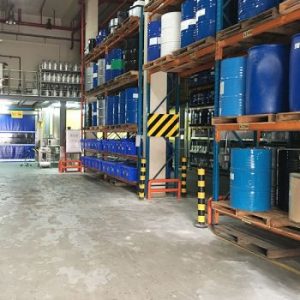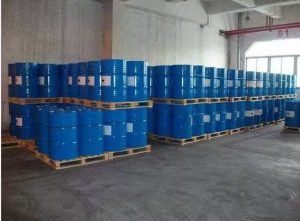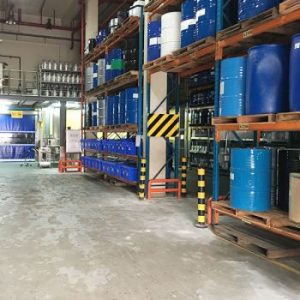Various composite molding processes
Continuous molding process
Continuous molding process of composite products refers to the whole process starting from inputting raw materials, going through the processes of glue impregnation, molding, curing, demolding, cutting, etc., until finally obtaining the finished products, which is carried out in a continuous manner.
According to the different products, continuous molding process is divided into three kinds of continuous pultrusion molding process, continuous winding molding process and continuous plate making process.

Continuous winding molding process is mainly used to produce FRP pipes and tanks of different calibers. The characteristics of continuous winding machine are: high production efficiency, stable product quality, low labor intensity, saving raw materials, reducing the number of mandrels, etc. However, this process has high technical content, large investment in equipment, and great difficulty in diameter change. Another process is the combination of plastic pipe extrusion technology and fiber winding process, plastic lined FRP pipe, extruded plastic pipe at the same time play a core mold and anti-corrosion lining two roles.
Pultrusion molding process is mainly used for the production of various FRP profiles, such as FRP rods, I-beam, angle, groove, square, hollow belly and shaped cross-section profiles. At present, the largest pultrusion molding machine, can produce section of 800mm × 800mm hollow fiberglass reinforced plastic profiles. New pultrusion molding technology continues to emerge, such as RIM pultrusion molding machine, curved profile pultrusion process.
Continuous plate process is mainly used for glass fiber felt, cloth as reinforcing materials, continuous production of various specifications of flat plate, corrugated plate and laminated structural panels.
Continuous molding process common features: ① production process is completely mechanized body automation, high production efficiency; ② production process is uninterrupted, the length of the product is not limited; ③ products do not need post-processing, the production process of edge waste less, saving raw materials and energy; ④ product quality and stability, repeatability, high yield; ⑤ easy to operate, save manpower, good labor conditions; ⑥ low cost.
Pultrusion molding process

Pultrusion molding process is to impregnated with resin glue continuous fiberglass bundles, tapes or cloth, etc., under the action of traction, through the extrusion die molding, curing, continuous production of unlimited length of FRP profiles. This process is most suitable for the production of various cross-section shapes of FRP profiles, such as rods, tubes, solid profiles (I-beam, groove, square profiles) and hollow-belly profiles (door and window profiles, blades, etc.).
Pultrusion molding is a special process in the molding process of composite materials, the advantages are: ① the production process is fully automated control, high production efficiency; ② pultrusion molding products in the fiber content can be up to 80%, soaking in tension, to give full play to the role of reinforcing materials, high strength products; ③ products longitudinal and transverse strength can be adjusted to meet the use of products with different mechanical properties; ④ No edge waste in the production process, the product does not require post-processing, so save labor, save raw materials, save energy; ⑤ product quality is stable, repeatability is good, the length can be cut off arbitrarily.
The disadvantage of pultrusion molding process is that the product shape is monotonous, only production line-shaped profiles, and the transverse strength is not high.
(1) Raw materials for pultrusion process
① Resin matrix In the pultrusion process, the most widely used is unsaturated polyester resin, accounting for more than 90% of the resin used in this process, in addition to epoxy resins, vinyl resins, thermosetting methacrylic resins, modified phenolic resins, flame-retardant resins and so on.
② reinforcing materials pultrusion process with reinforcing materials, mainly glass fibers and their products, such as untwisted roving, continuous fiber mats and so on. In order to meet the special performance requirements of the product, you can choose aramid fiber, carbon fiber and metal fiber. No matter which kind of fiber, used in pultrusion process, its surface must be processed, so that it can be well bonded with the resin matrix.
(3) auxiliary materials pultrusion process of auxiliary materials are mainly mold release agent and filler.
(2) Pultrusion molding die

Mold is pultrusion molding technology is an important tool, generally by the pre-molding mold and molding die two parts. ① Pre-forming mold In the pultrusion molding process, reinforcing materials impregnated with resin (or impregnated at the same time), before entering the molding die, must be composed of a set of guiding elements of the pre-forming mold, the role of the pre-forming mold will be impregnated with reinforcing materials, in accordance with the profile cross-section configuration form, and gradually formed to approximate the molding die-controlled shape and size of the pre-forming body, and then into the molding die, which can ensure that products The yarn content of the section is uniform. ② molding die The ratio of the cross-sectional area of the molding die to the cross-sectional area of the product should generally be greater than or equal to 10, in order to ensure that the mold has sufficient strength and rigidity, and the heat distribution after heating is uniform and stable. Pultrusion mold length is based on the molding process traction speed and resin gel curing speed decision to ensure that the product is pulled out to reach the degree of demolding and curing. General use of steel chrome-plated, cavity surface requirements of clean, wear-resistant, to reduce the friction resistance of pultrusion molding and improve the service life of the mold.
(3) Pultrusion molding process
Pultrusion molding process is composed of yarn feeding, soaking, pre-molding, curing and shaping, hauling, cutting and other processes. Twistless roving is led out from the yarn frame, and then enters into the soaking tank to soak the resin glue through the yarn rower, and then enters into the pre-molding mold to discharge the excess resin and air bubbles, and then enters into the molding mold for gelation and curing. The cured products are continuously pulled out from the mold by the traction machine, and finally cut off by the cut-off machine at a fixed length. In the molding process, each process can have different methods: such as yarn feeding process, you can increase the continuous fiber mat, ring winding yarn or with three-way fabric to improve the transverse strength of the product; traction process can be tracked traction machine, you can also use robotic; curing can be in-mold curing, or curing with a heating furnace; heating can be a high-frequency electric heating, or with molten metal (low melting point metal) and so on. (4) Other pultrusion molding processes
(4) other pultrusion molding process
Pultrusion molding process in addition to vertical and horizontal units, there are also bent products pultrusion molding process, reaction injection pultrusion process and filler-containing pultrusion process.
Continuous winding process
Continuous winding process and fixed-length glass fiber reinforced plastic pipe compared with the following characteristics: ① production continuity, easy to automate the management and rapid curing, high production efficiency; ② less auxiliary equipment required, especially the amount of molds needed to less investment in product replacement; ③ length of the product can be cut off arbitrarily, the use of the long this (12m or 15m), you can reduce the number of pipe joints to reduce the cost of the project; ④ automation of the production process, process parameters, centralized control, product quality is easy to ensure. Centralized control, product quality is easy to ensure.
Another continuous pipe making process adopts plastic pipe and FRP composite process, i.e. EPF method, the composite material pipe produced by this method is better than ordinary FRP pipe in terms of anti-corrosion and seepage resistance.
(1) Raw materials for continuous pipe winding
The raw materials used for continuous pipe winding should be the same to meet the requirements for the use of the products and the process of production.
According to the production requirements of FRP pipe and PVC/FRP composite pipe, the varieties of reinforcing materials are surface felt, short-cut glass fiber felt or needle-punched composite felt combined with surface felt, and untwisted roving.
Resin matrix The resin used for continuous pipe winding is mainly unsaturated polyester resin. The requirements of continuous pipe wrapping process for the resin are: appropriate viscosity, easy to soak the fiber, long gel time, short curing time, low exothermic curing and small curing shrinkage.
③Auxiliary materials In order to improve the stiffness of the pipe, quartz sand is often added, and its additive amount can be up to 30% (maximum). Release agent with polyester film, film cut into bands, the width of the steel belt width doubled, winding lap 1/2.
(2) Continuous pipe winding process
Continuous tube winding is with pre-preg fiberglass yarn or tape (or now soaked), according to the design of the winding law winding in the core mold, by the external and internal heating and curing molding, in the core mold on the steel belt to promote, continuous forward, demolding, and then after the second curing fixed length cut off. When changing the pipe diameter, it is only necessary to change the core mold of the pipe making machine.
Continuous plate making process
Continuous plate process began after World War II FRP industry from military to civilian era, our country since the beginning of 1965 began to study, the first successful research is wire mesh reinforced polychlorinated ethylene wave plate production red, products for the transverse wave tiles, the 70’s in Shanghai developed into a longitudinal wave of polyester FRP production line, in the 80’s has introduced three continuous production line of plate, its production technology reaches the international advanced level.
FRP waveform plate is a kind of product with the largest dosage in the construction industry. It is mainly used in temporary construction projects, roof lighting of industrial buildings and agricultural greenhouses. Compared with traditional asbestos tiles, it is characterized by light weight, high strength, impact resistance, light transmission and beauty and durability.
Fiberglass reinforced plastic (FRP) waveform plate is divided into two categories: longitudinal wave plate and transverse wave plate, longitudinal wave plate with corrugation direction parallel to the long side of the plate, and transverse wave plate with corrugation direction perpendicular to the long side of the plate. In terms of the shape of the corrugation, there are standard continuous circular wave, continuous shaped corrugation and discontinuous shaped corrugation.
The continuous plate making process is more or less the same both at home and abroad, only the local structure of the equipment and process measures are slightly different.
Thermoplastic composite material molding process
Thermoplastic composites are the general name of various thermoplastic resins reinforced with glass fiber, carbon fiber, aramid fiber, etc., which is called FRTP (Fiber Rinforced Thermo Plastics) abroad. Due to the different types of thermoplastic resins and reinforcing materials, the production process and the performance of the composite materials made vary greatly.
From the perspective of production process analysis, plastic composites are divided into two categories of short fiber reinforced composites and continuous fiber reinforced composites: (1) short fiber reinforced composites ① injection molding process; ② extrusion molding process; ③ centrifugal molding process. (2) continuous fiber reinforced and long fiber reinforced composites ① prepreg molding; ② sheet molding plastic stamping; ③ sheet molding plastic vacuum forming; ④ prepreg yarn winding molding; ⑤ pultrusion molding.
The special properties of thermoplastic composites are as follows:
(1) low density, high strength thermoplastic composite material density of 1.1 ~ 1.6g/cm3, only 1/5 ~ 1/7 of steel, than the thermosetting glass fiber reinforced plastic lighter than 1/3 ~ 1/4. it can be a smaller unit mass to obtain higher mechanical strength. Generally speaking, whether it is a general-purpose plastics or engineering plastics, reinforced with glass fiber, will obtain a higher enhancement effect, improve the strength of the application grade.
(2) The performance can be designed with a large degree of freedom The physical properties, chemical properties and mechanical properties of thermoplastic composites are designed by reasonably selecting the types of raw materials, ratios, processing methods, fiber content and layup methods. Since the types of matrix materials of thermoplastic composites are much more than thermoset composites, the freedom of material selection and design is much larger.
(3) Thermal Properties The service temperature of general plastics is 50-100℃, and it can be increased to more than 100℃ after reinforced with glass fiber. Nylon 6 heat distortion temperature of 65 ℃, with 30% glass fiber reinforced, the thermal form temperature can be increased to 190 ℃. The heat resistance of polyether ether ketone resin reaches 220℃, and after reinforced with 30% glass fiber, the use temperature can be increased to 310℃, such a high heat resistance, thermosetting composites can not reach. The linear expansion coefficient of thermoplastic composites is 1/4 to 1/2 lower than that of unreinforced plastics, which can reduce the shrinkage rate in the molding process and improve the dimensional accuracy of products. Its thermal conductivity of 0.3 ~ 0.36W (㎡ – K), similar to thermoset composites.
(4) Chemical corrosion resistance The chemical corrosion resistance of the composite material is mainly determined by the performance of the matrix material. There are many kinds of thermoplastic resins, each of which has its own anticorrosion characteristics, so the matrix resin can be preferred according to the environment and medium conditions of the composite material, and it generally meets the requirements for use. The water resistance of thermoplastic composites is better than that of thermoset composites.
(5) Electrical properties General thermoplastic composites have good dielectric properties, do not reflect radio waves, through the microwave performance is good. As the water absorption of thermoplastic composites is smaller than that of thermoset FRP, its electrical properties are better than the latter. In the thermoplastic composite materials to add conductive materials, can improve its conductive properties, to prevent the generation of static electricity.
(6) waste can be recycled thermoplastic composite materials can be repeated processing molding, scrap and edge residue can be recycled, will not cause environmental pollution.
As thermoplastic composites have many special properties better than thermosetting FRP, the application field is very wide, from the analysis of foreign applications, thermoplastic composites are mainly used in vehicle manufacturing industry, electromechanical industry, chemical anticorrosion and construction engineering and so on.
1、Injection molding process
Injection molding is the main production method of thermoplastic composites, with a long history and the widest application. Its advantages are: short molding cycle, minimum energy consumption, high precision products, a molding switch complex and with inserts products, a mold can produce several products, high production efficiency. The disadvantage is that it can not produce fiber-reinforced composite products and higher quality requirements for the mold. According to the current level of technological development, injection molding of the largest products for the 5kg, the smallest to 1g, this method is mainly used to produce a variety of mechanical parts, construction products, home appliances shell, electrical materials, vehicle parts and so on.
2、Extrusion molding process
Extrusion molding is one of the more widely used processes in the production of thermoplastic composite products. Its main features are continuous production process, high production efficiency, simple equipment, technology is easy to master. Extrusion molding process is mainly used for the production of pipes, rods, plates and shaped cross-section type products. Reinforced plastic pipe glass fiber reinforced doors and windows shaped cross-section profiles, there is a large market in China. Extrusion molding composite products process is as follows:
3、Winding molding process
The principle of winding molding process and winding machine equipment of thermoplastic composites is the same as that of thermosetting glass, the difference is that the reinforcing material of thermoplastic composites winding products is not fiberglass roving, but pre-impregnated yarns that have been impregnated with glue (thermoplastic resin). Therefore, it is necessary to add a preheating device for the prepreg yarn and a heating and pressurizing roller on the winding machine. When winding and molding, the prepreg yarn is heated to the softening point first, then heated at the contact point with the core mold, and pressurized by the pressurizing rollers, so as to make it fused into a whole.
4、Pultrusion molding of thermoplastic composites
The pultrusion molding process of thermoplastic composite materials is basically similar to that of thermosetting FRP. As long as into the mold before the dip method to be modified, the production of thermosetting glass fiber reinforced plastic equipment can be used. Production of thermoplastic composites pultruded products are two kinds of reinforcing materials: one is the impregnated prepreg yarn or prepreg tape, the other is not impregnated fiber or fiber tape.
5、Welded Layer Method
This method is the use of thermoplastic composite materials can be welded, the production of composite materials sheet. The method is as follows: first pressed on the table to lay a layer of prepreg (generally 500mm wide), laying the second layer of dipping material, open the pressure roller welder, so that the prepreg into the pressure roller under the welder to make the upper and lower layers of prepreg in a few seconds at the same time by the heat of the melting, when the machine is moving forward, the prepreg in the pressure roller under the action of the pressure (0.3MPa) bonded together as a whole. Repeatedly, any thickness of the sheet can be produced.
6、Thermoplastic sheet molded plastic products stamping molding process
Thermoplastic sheet molding products stamping molding and thermosetting SMC compression molding is different, it is necessary to preheat the blank first, and then put put the mold pressure molding.
7、Connection technology of thermoplastic composites
Thermoplastic composite material connection methods are many, examples are as follows: ① riveting For thermoplastic composite material riveting with rivets, generally with continuous fiber reinforced thermoplastic manufacturing, preferably with pultruded bar manufacturing. Construction, rivets preheated to the temperature can be pressurized plastic change, rivets and apertures should be able to closely match the diameter, can not be large, also

